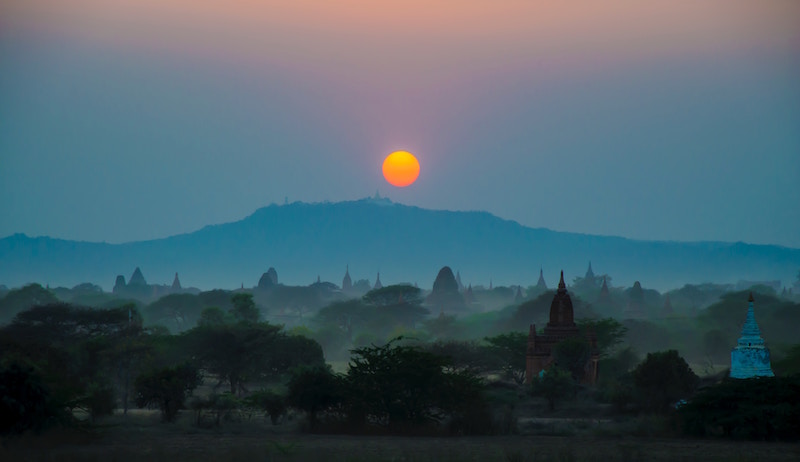As Myanmar’s largest city (and its former capital), Yangon is a bustling commercial hub home to colonial-era structures, gilded pagodas, and picturesque pockets of nature. A mix of traditional culture and modern charm, there’s plenty to explore here, from lively markets and religious monuments to quaint galleries and historical sights.
Read on for our recommendations.
Admire exquisite pagodas (and other religious sites)
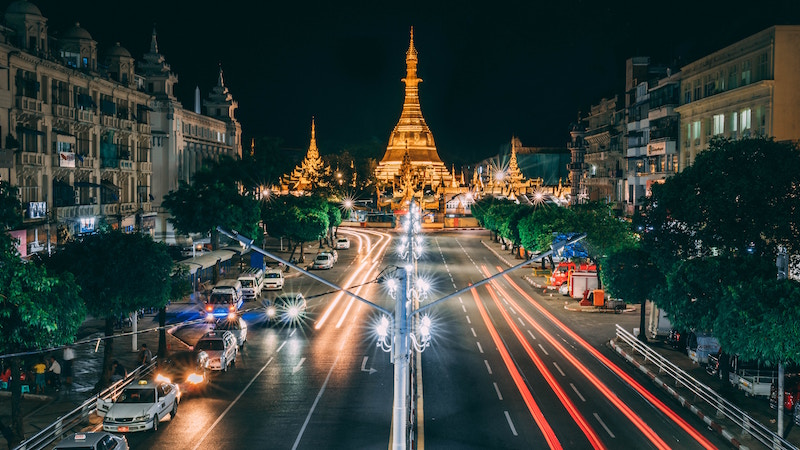
The most famous of them all is undoubtedly Shwedagon Pagoda, an iconic landmark that attracts daily crowds to its brilliant gold hues and towering stupa, which can be seen across the city. Believed to contain relics from Buddha, the sacred monument shines brightest at sunrise and sunset.
In the heart of downtown Yangon sits the just-as-ancient Sule Pagoda, surrounded by the bustle of traffic. And if you’d like to see the reclining Buddha, head to Chauk Htat Gyi Pagoda, which is across the road from Ngar Htat Gyi Pagoda, where you’ll find a sitting image of Buddha.
Other places of worship include the Swe Tat Myat Pagoda, a more recently-built structure known as the tooth relic pagoda; Kyauk Taw Gyi Pagoda, where the structure of Buddha is carved out of white marble; Saint Mary’s Cathedral, the biggest Catholic church in the city; and Musmeah Yeshua Synagogue, the only one of its kind in the country.
Explore Yangon on foot
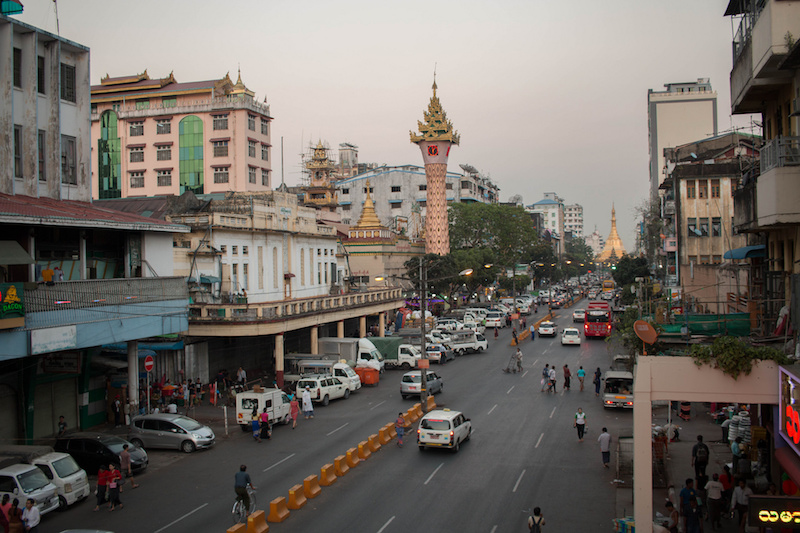
If you’re the type who loves traipsing across a new place with your trusty camera in hand, you can sign up for free guided walking tours to learn more about Yangon’s history, culture, and architecture. Alternatively, head to Inya Lake, the city’s largest, for a tranquil stroll, or watch the sun go down over the horizon at the busy Botahtaung harbor, where the renowned pagoda of the same name resides.
For more quiet time with nature, spend an afternoon at Kandawgyi Nature Park and take in the botanic vistas of the garden and its famous lake of the same name.
Feast on local delicacies

You can’t pay a visit to Yangon and not try its local cuisine, so keep your eyes peeled for foods like Burmese curry, tea leaf salad, Shan-style turmeric rice, and mohinga, the famous fish broth noodle dish. Besides popping in to restaurants, you can munch your way through street food markets in Chinatown, Little India, and on Strand Road or Maha Bandula Park.
If you’re unsure about where to go or what to eat, sign up for a food tour to get an introduction from a local guide to the city’s best foods. Also don’t forget to check out a couple teahouses, including ones such as Rangoon Tea House, Yatha Tea Shop, Lucky Seven Tea Shop, Sate Taing Kya, and Modern Tea Shop to explore the country’s traditional tea culture.
Get your art on
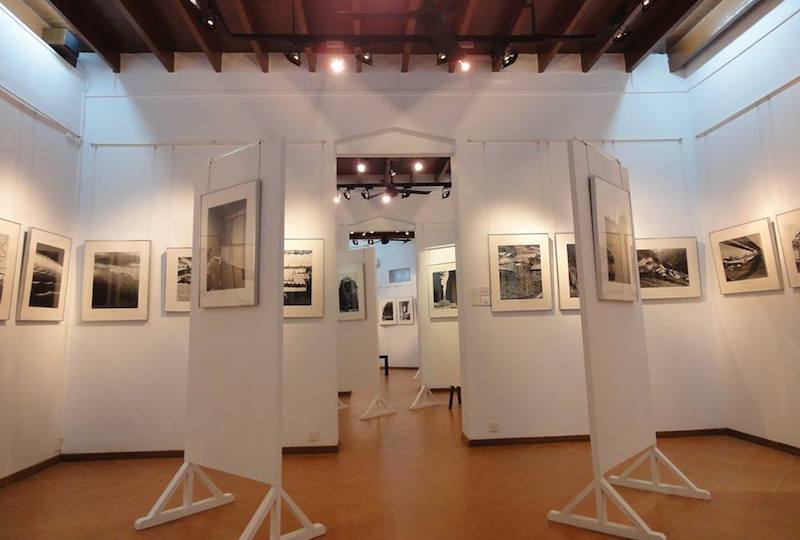
Find your creative side in the art scene of Yangon, where its people, culture, and landscape are represented in expressions ranging from traditional to progressive. You can wander around artistic spaces from the commercial to the contemporary, including the likes of Nawaday Tharlar Art Gallery, New Zero Art Space, Gallery 65, Myanm/art, Lokanat Gallery, Pansodan Art Gallery, and Inya Art Gallery.
While you’re at it, pop by the National Museum of Myanmar to look through its collection of artefacts, historic memorabilia, art, cultural relics, and more.
Ride the circular railway from city to village
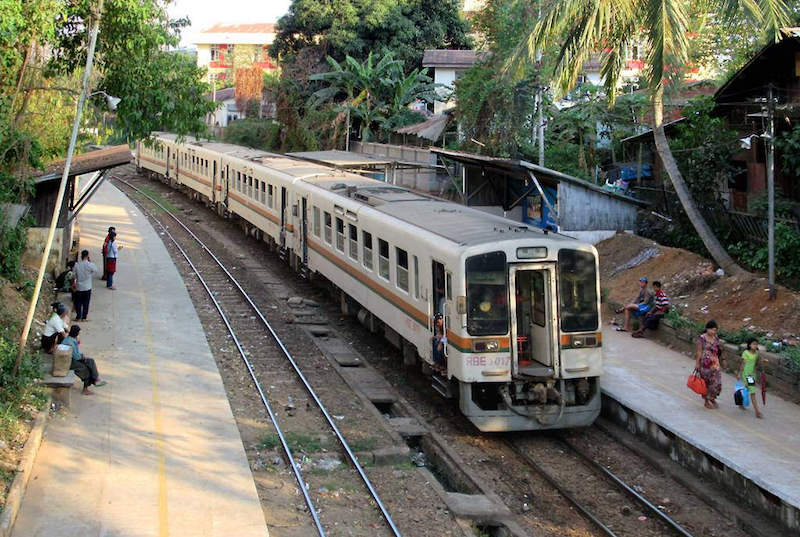
Can’t take walking around in the heat? Hop on the Circle Line train for a three-hour loop around the city. From urban vistas to rural landscapes, you’ll be riding with throngs of locals and their wares, past countryside towns and villages offering a peek into life in Yangon. But if you don’t have hours to spare, you can always take a shorter ride and head back after a couple stops.
Shop for tidbits and trinkets at markets
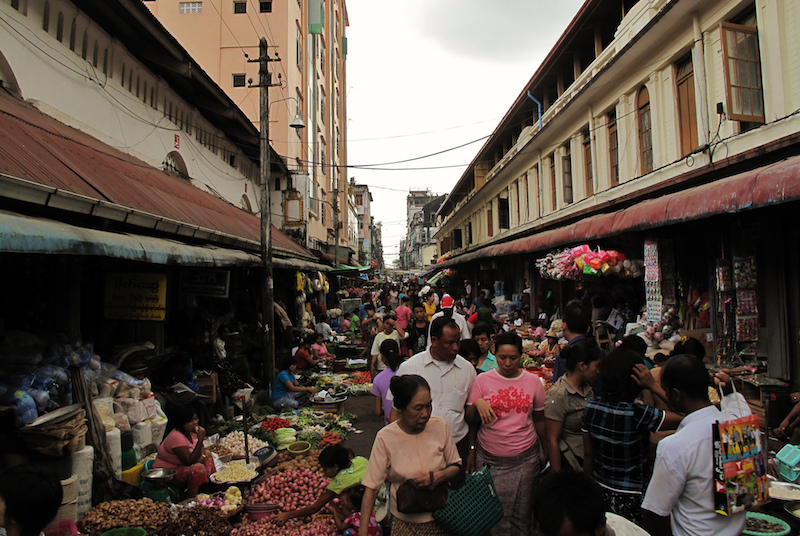
Colorful, chaotic, and crowded, the street bazaars of Yangon teem with handmade crafts, local cuisines, fresh produce, toys, herbs and medicines, and other goodies for you to rummage through and haggle over.
Tourist hotspot Bogyoke Aung San Market fills its compound with hundreds of stalls hawking souvenirs, jewelry, and fabrics, while Thiri Mingalar Market is a vibrant spot displaying shelves upon shelves of vegetables, fruits, and flowers. For an adventure into a traditional wet and dry market, swing by Theingyi Zay and its cornucopia of groceries, textiles, cosmetics, and homeware goods.
